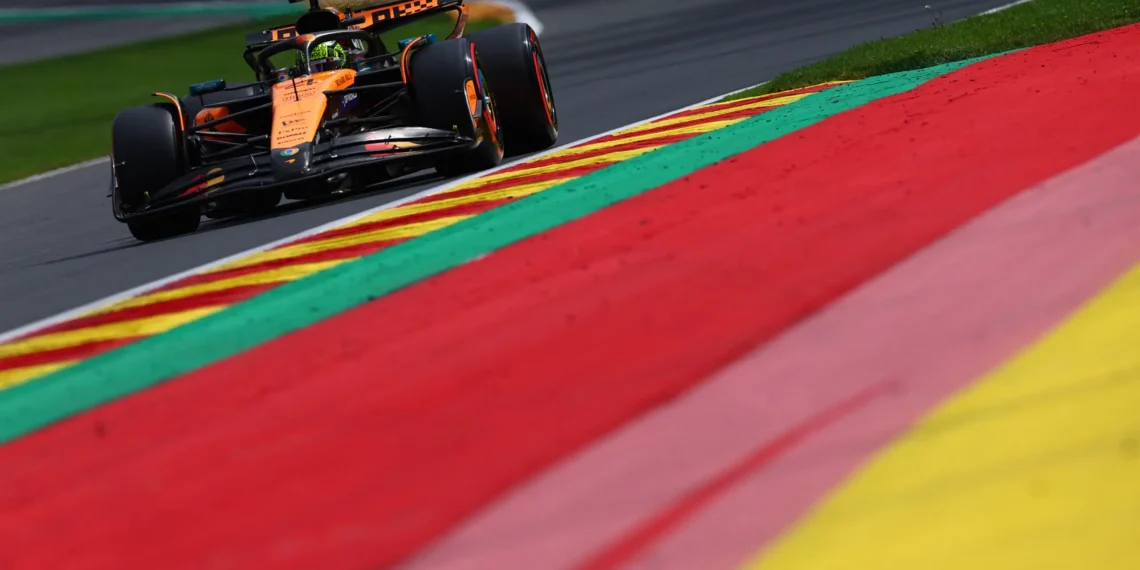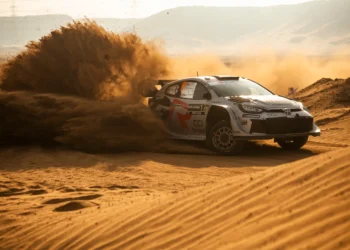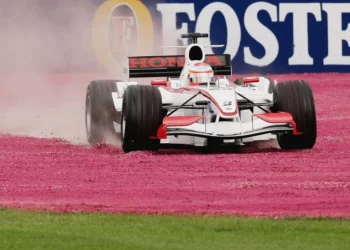McLaren Prepares to Conquer F1’s Dramatic 2026 Regulations: Can Success Be Transferred?
As the Formula 1 landscape braces for a seismic shift in 2026, McLaren’s team principal Andrea Stella is confident that the innovative spirit and design philosophies that propelled the team to prominence in 2025 will not only survive but thrive amidst the impending changes. This major overhaul, touted as one of the most significant regulatory transformations in the sport’s illustrious history, presents both challenges and opportunities for every team on the grid.
In a bold departure from the current era, the 2026 regulations will see F1 cars abandoning the heavy reliance on ground effect aerodynamics. Instead, the sport is returning to a flat underfloor design that demands reduced downforce levels. This shift will necessitate the integration of active aerodynamics, especially on straightaways, to balance the power dynamics between the traditional internal combustion engine and a more substantial electric component, marking a near 50-50 split.
Stella, speaking exclusively to insiders, revealed the potential for McLaren to leverage its successful design principles as the team navigates this uncharted territory. “There are fundamental elements of our technical approach that will carry over, regardless of the changes in regulations,” he asserted. “Our focus on aerodynamic efficiency, tire interaction, and effective cooling are universal tenets that will bolster our performance.”
However, the transition to the 2026 rules won’t be without its hurdles. While McLaren and its rivals will start with a clean slate, the knowledge and expertise gained over the past two seasons cannot be entirely disregarded. Stella emphasized the duality of the team’s existing know-how. “Some aspects of our acquired knowledge will be directly applicable to the new regulations, while others will require us to reinvent our strategies,” he explained.
He elaborated on the intricacies of this knowledge transfer, acknowledging that while the successes of the previous generation of cars were achieved through a meticulous process of refinement and adaptation, the new flat-floor design will require a fresh approach. “We have learned how to achieve aerodynamic efficiency with ground effect cars, but the next generation will demand a different kind of innovation,” he noted. “Thus, while some knowledge will be lost in translation, the core methodologies that brought us success remain intact and applicable.”
As the F1 community anticipates the 2026 season, Stella’s insights suggest a fascinating landscape where McLaren’s current strengths could provide an edge in the race for supremacy. “There’s a substantial portion of our capabilities that can be utilized moving forward, and while we may lose some ground, the playing field will likely level out as all teams adapt to the new rules,” he concluded.
With the stakes higher than ever, McLaren is poised to leverage its rich heritage of innovation and adaptability. As the countdown to the 2026 season begins, the motorsport world watches with bated breath—can McLaren reclaim its position among the elite in this new era of Formula 1? Only time will tell, but one thing is certain: the race for supremacy is far from over.










